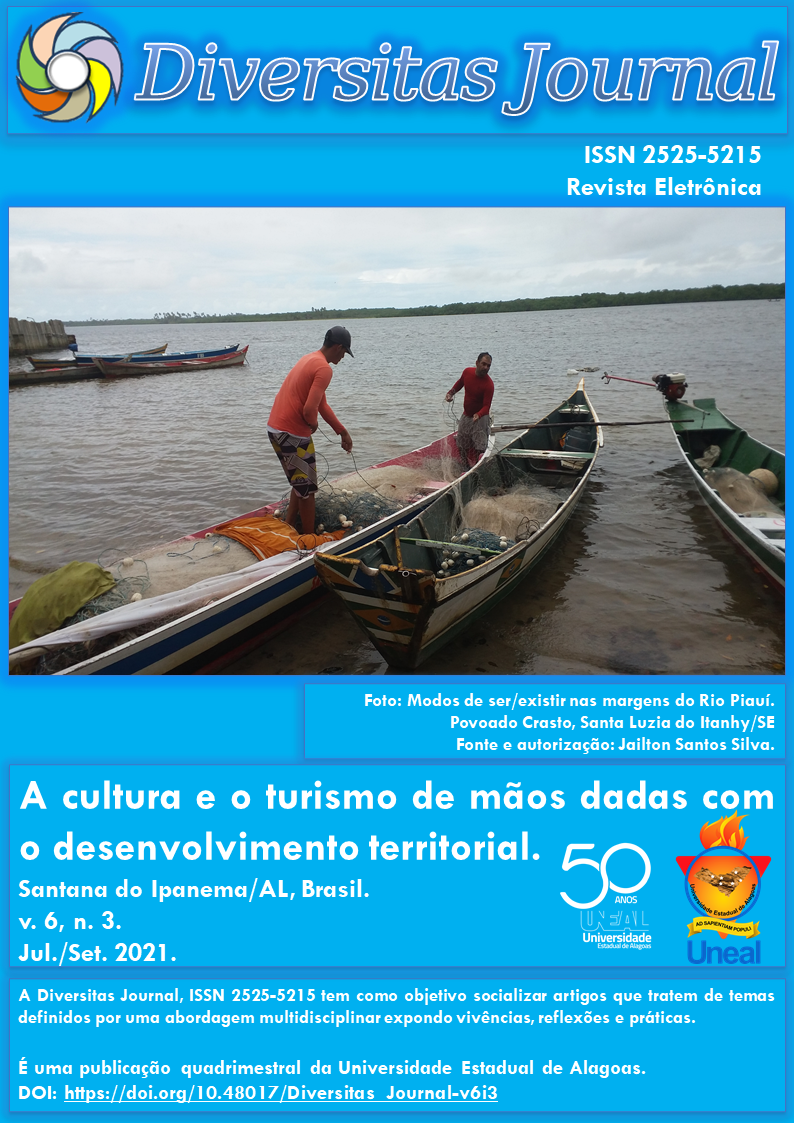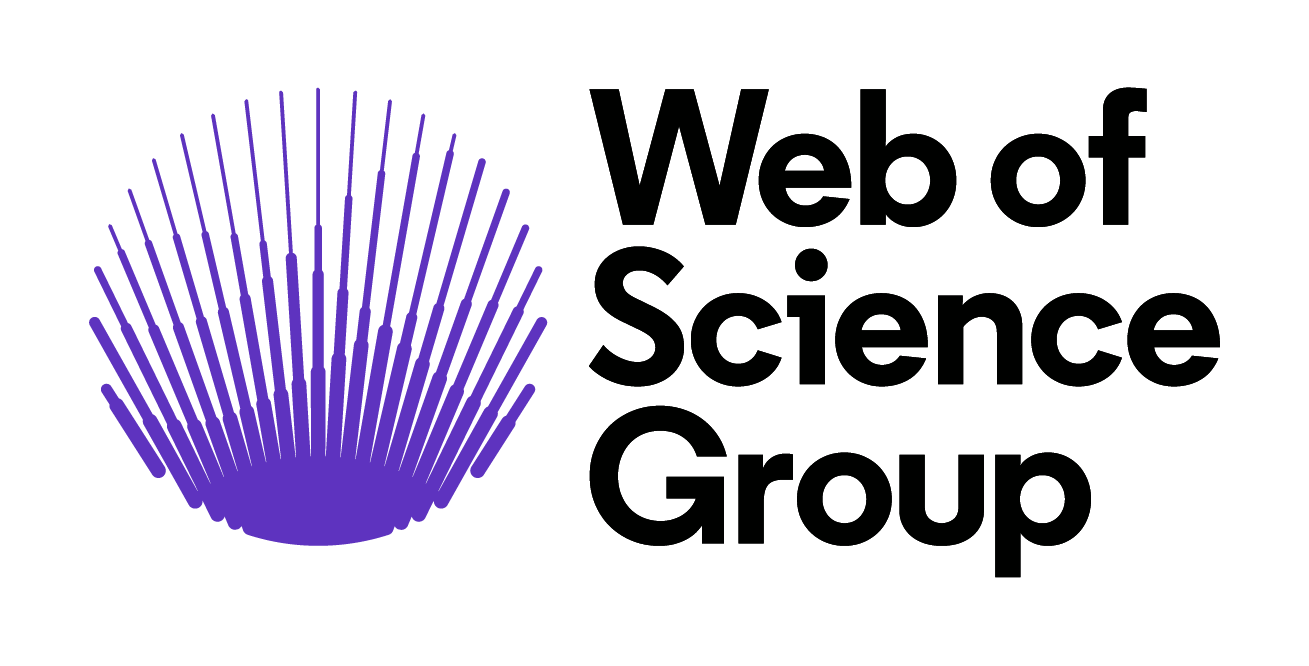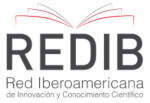Inteligência artificial na agricultura com aplicabilidade no setor sementeiro
DOI:
https://doi.org/10.48017/Diversitas_Journal-v6i3-1857Abstract
ABSTRACT: Methods for classification and identification of essential activities in the analysis of seeds is of great technical and economic importance in the agricultural sector and contributes to the added value in the final production of the crop. With technology in the field, demand to solve several problems, human intellectual capacity is inherent. The objective was to portray challenges and evident solutions in the use of artificial intelligence in agriculture and to specify the use of this intellectual activity in the seed sector. Peer-reviewed articles on seed machine learning and artificial intelligence in agriculture were reported in this paper. The processing of data and images with a machine vision are complemented through a common classifier. With the dynamics of current research in the seed industry, trends are expected to investigate in the near future, analysis of characteristic data in seed production systems related to the aspects of processing, storage, drying and quality control.
KEYWORDS: Seed classification, Agricultural future, Computer vision.
Metrics
References
CINAR, A. C. Training feed-forward multi-layer perceptron neural network swith a tree-seed algorithm. Arabian Journal for Science and Engineering. v. 45, p. 10915 -10938, 2020. Doi: https ://doi.org/10.1007/S13369-020-04872-1.
ELFERINK, M.; SCHIERHORN, F. Global demand for food is rising. Can we meet it?Harvard Business Review. 4p. April 07. 2016. https://hbr.org/2016/04/global-demand-for-food-is-rising-can-we-meet-it.
ELMASRY, G.;MANDOUR, N.;WAGNER, MH.;DEMILLY, D.;VERDIER, J.;BELIN. E., ROUSSEAU, D. Utilization of computer vision and multispectral imaging techniques for classification of cowpea (Vignaunguiculata) seeds. Plant Methods,v.15, n. 24, 2019. Doi: https://doi.org/10.1186/s13007-019-0411-2.
FAO.Food and Agriculture Organization of the United Nations. Global agriculture towards 2050: high-level expert forum on how to feed the world in 2050, 12-13. Oct 2009 by Food and Agriculture Organization of the United Nations, 2009.https://reliefwe b.int/report/world/global-agriculture-towards-2050-high-level-expert-forum-how-feed-world-2050-12-13-oct.
FAO. Food and Agriculture Organization of the United Nations, 2017. The state of food and agriculture leveraging food systems for inclusive rural transformation.978-92-5-109873-8. 2017, p.1-181.
FRANÇA-SILVA, F.; REGO,C. H. Q.; GOMES-JUNIOR, F. G.; MORAES, M. H. D.; MEDEIROS, A. D.; SILVA C. B. Detection of Drechsleraavenae(Eidam) Sharif [Helminthosporiumavenae(Eidam)] in Black Oat Seeds (Avena strigosaSchreb) using multispectral imaging. Sensors,v.20, n. 12, p.33-43, 2020. doi: https://doi.org/10.3 390/s20123343.
GRANITTO, P. M.; NAVONE, H. D.; VERDES, P. F.; CECCATTO, H. A. Weed seeds identification by machine vision, Computers and Electronics in Agriculture,v. 33, n. 2, p. 91-103, 2002. Doi: https://doi.org/10.1016/S0168-1699(02)00004-2.
HAYKIN, S. Neural networks: a comprehensive foundation. New Jersey: Prentice Hall; Upper Saddle River, 1999. 218p.
JAHANI, A. Sycamore failure hazard classification model (SFHCM): an environmental decision support system(EDSS) in urban green spaces.International Journal of Environmental Science and Technology.v. 16, p. 955–964. 2019a Doi: https://doi.org/10.1007/s13762-018-1665-3.
JAHANI, A. Forest landscape aesthetic quality model (FLAQM): A comparative study on landscape modelling using regression analysis and artificial neural networks. Journal of Forest Science.v. 65, n. 2, 61–69, 2019b. Doi: https://doi.org/10.17221/86/2018-JFS.
JHA, K.; DOSHI, A.; PATEL,P.; SHAH, M. A comprehensive review on automation in agriculture using artificial intelligence, Artificial Intelligence in Agriculture, v. 2, p. 1-12, 2019. Doi: https://doi.org/10.1016/j.aiia.2019.05.004.
KAUR, K.Machine learning: applications in Indian agriculture. International Journal of Advanced Research in Computer and Communication Engineering,v.5, n. 4.2016.
KIM, R. G.; EVANS; W. M. IVERSEN. Remote sensing and control of an irrigation system using adistributed wireless sensor network. IEEE Transactions on Instrumentationand Measurement,v. 57, n. 7, p. 1379-1387, 2008. Doi: 10.1109/TIM.20 08.917198.
LIAKOS,K.;BUSATO,P.;MOSHOU,D.;PEARSON,S.;BOCHTIS, D.Machine learning in agriculture: A review. Sensors,v. 18, n. 8, p.2674,2018. Doi: 10.3390/s18082674.
MAHAJAN, S.; MITTAL, S. K; DAS, A. Alternative test approach based on machine vision for testing physical purity, viability and vigor of soybean seeds(Glycinemax). Journal of Food Science and Technology, v. 55, n. 10, p. 3949-3959. Doi: https://doi.org/10.1007/s13197-018-3320-x.
MEDEIROS, A. D. de; PINHEIRO, D. T.; XAVIER, W. A.; SILVA, L. J. da; DIAS, D. C. F. dos S. Quality classification of Jatrophacurcasseeds using radiographic images and machine learning. Industrial Crops and Products,v. 146, p. 112-162, 2020a. Doi: https://doi.org/10.1016/j.indcrop .2020.112162.
MEDEIROS,A.D.de; SILVA, L. J.; SILVA, J. M.;DIAS,D.C.F.S.;PEREIRA,M.D.IJCropSeed: An open-access tool for high-throughput analysis of crop seed radiographs. Computers and Electronics in Agriculture,v. 175, p. 105555, 2020b. Doi: https://doi.org/1 0.1016/j.co mpag.2020.105555.
MONTEIRO, R. C. M.;GADOTTI,G.I.; MALDANER, V.; CURI, A. B. J.; BARBARA NETO, M. Image processing to identify damage to soybean seeds. Ciência Rural, v. 51, p. 1-8, 2021. Doi:https://doi.org/10.1590/0103-8478cr20200107.
MORAES, N. A. B. Predição de ranqueamento de lotes de sementes de milho por inteligência artificial. 2020, 29 f. Dissertação de Mestrado em Ciências –Programa de Pós-Graduação em Ciência e Tecnologia de Sementes. Universidade Federal de Pelotas, Pelotas/RS.2020.link: http://guaiaca.ufpel.edu.br/handle/prefix/5713.
MORETI,M.P.; OLIVEIRA, T.; SARTORI, R.; CAETANO, W. Inteligência artificial no agronegócio e os desafios para a proteção da propriedade intelectual. Cadernos de Prospecção,v. 14, p. 60, 2021. Doi:http://dx.doi.org/10.9771/cp.v14i1.33098.
MOSAFFAEI, Z.; JAHANI, A.; ZARE, C. M. A.; GOSHTASB, H.; ETEMAD, V. SAFFARIHA, M. Soil texture and plant degradation predictive model (STPDPM) in national parks using artificial neural network (ANN). Journal Modeling Earth Systems and Environment, v. 6, p. 715–29, 2020. Doi: https://doi.org/10.1007/s40808-020-007 23-y.
MOSLEM, A.; YOUNESSI-HMAZEKHANLU, M.; RAMAZANI, S. H. R.; OMIDI, A. H.Artificial neural networks and multiple linear regression as potential methods for modeling seed yield of safflower (CarthamustinctoriusL.), Industrial Crops and Products,v. 127, p. 185-194, 2019. Doi: https://doi.org/10.1016/j.indcrop.2018.10.050.
OLESEN, M. H.; NIKNESHAN, P.; SHRESTHA, S.; TADAYYON, A.; DELEURAN, L. C.; BOELT, B.; GISLUM, R. Viability prediction of RicinuscummunisL. seeds using multispectral imaging. Sensors.,v. 15 n. 2, p. 4592-4604,2015. Doi: https://doi.org/10.3390/s150204592.
PANPATTE, D. G.Artificial intelligence in agriculture: an emerging era of research.Anand Agricultural University,Canada, p.1-8, 2018.
PANT, L. P. Digitally engaged rural community development. Journal of Agriculture, Food Systems, and Community Development,v. 6, n. 4, p.169-171, 2016. Doi: 10.5304/jafscd.201 6.064.005.
RASCHKA, S. Model evaluation, model selection, and algorithm selection in machine learning. arXiv,v. 3, p. 1-48, 2018. Doi: arXiv:1811.12808.
REHMAN, T. U.; SULTAN MAHMUD, M. D.; CHANG, Y. K.; JIN, J.; SHIN, J. Current and future applications of statistical machine learning algorithms for agricultural machine vision systems, Computers and Electronics in Agriculture,v. 156, p. 585-605. 2019. Doi: https://doi .org/10.1016/j.compag.2018.12.006.
SAFFARIHA, M.; JAHANI, A.; POTTER, D. Germination prediction of Salvia limbata seeds under ecological stress in protected areas: an artificial intelligence modeling approach. BMC Ecology,v. 20, 48, 2020. Doi: https://doi.org/10.1186/s12898-020-00316-4.
SAHA, D.; MANICKAVASAGAN, A. Machine learning techniques for analysis of hyperspectral images to determine quality of food products: A review, Current Research in Food Science,v. 4, p 28-44, 2021. Doi: https://doi.org/10.1016/j.crfs.2021.01.002.
SALAKEN, M. S.; ABBAS, K.; THANH, N.; SAEID, N. Seeded transfer learning for regression problems with deep learning. Expert Systems with Applications.v. 115, p. 565-577. 2018. Doi: https://doi.org/10.1016/j.eswa.2018.08.041.
SALIMI,Z.; BOELT. B. Classification of processing damage in sugar beet (Betavulgaris) seeds by multispectral image analysis. Sensors, v. 19, n. 10, p. 23-60, 2019. Doi: https://doi.org/10.3390/s19 102360.
SCHNEIDER, C. A.; RASBAND, W. S.;ELICEIRI, K. W. NIH Image to ImageJ: 25 years of image analysis. Nature Methods,v.9, p. 671-675, 2012. Doi: 10.1038/nmeth.2089.
SHARMA, A. SATISH, D.; SHARMA, S.; GUPTA, D. iRSVPred: A web server for artificial intelligence based prediction of major basmati paddy seed varieties. Frontiers in Plant Science, v. 10, p. 1791, 2020. Doi: 10.3389/fpls.2019.01791.
SINGH, G.; SINGH, A.; G. KAUR. Role of artificial intelligence and the internet of things in agriculture.16. Ed(s): KAUR, G.; TOMAR, P.; TANQUE, M. Artificial intelligence to solve pervasive internet of things issues, Academic Press, c. 16, p. 317-330, 2021. Doi: https://doi.org/1 0.1016/B978-0-12-818576-6.00016-.
SOUZA, S. de R.; LOPES, B.; LADISLAU, J.; RESIN GEYER, C. F.; DA ROSA, S. J. L.; AFONSO CARDOZO, A.; CORRÊA, Y. A.;GADOTTI,G.I.; BARBOSA, J. L. V. Continuous monitoring seed testing equipaments using internet of things. Computers and Electronics in Agriculture,v.158, p. 122-132, 2019. Doi:https://doi.org/10.1016/j.compag.2019.01.024.
TAGARAKIS, A.; LIAKOS, V.; FOUNTAS, S.; KOUNDOURAS, S.; GEMTOS, T. Management zones delineation using fuzzy clustering techniques in grapevines. Precision Agriculture,v. 14, n. 1, p. 18-39, 2013. Doi: https://doi.org/10.1007/s11119-012-9275-4.
TALAVIYA, T.; SHAH, D.; PATEL, N.; YAGNIK, H.; SHAH, M. Implementation of artificial intelligence in agriculture for optimisation of irrigation and application of pesticides and herbicides. Artificial Intelligence in Agriculture,v. 4, p. 58-73, 2020. Doi: https://doi.org/10.1016/j.aiia .2020.04.002.
TILLMANN, M. A. A.; MENEZES, N. L. Análise de Sementes. In: Sementes: Fundamentos científicos e tecnológicos.Ed. Universitária/UFPel, Pelotas, p. 138–198, c. 3, 2012.
TU, K.; WEN, S.; HENG, Y.; ZHANG, T.; PAN, T.; WANG, J.; WANG, J.; SUN, Q. A non-destructive and highly efficient model for detecting the genuineness of maize variety 'JINGKE 968′using machine vision combined with deep learning. Computers and Electronics in Agriculture,v. 182, p. 106002, 2021. Doi: https://doi.org/10.1016/j.compa g.2021.106002.
VARELA, N.; SILVA, J.; PINEDA, O. B.; CABRERA, D. Prediction of the corn grains yield through artificial intelligence. Procedia Computer Science,v. 170, p. 1017-1022, 2020. Doi: https ://doi.org/10.1016/j.procs.2020.03.080.
VIEIRA,E.M.de A.; NEVES, N. T. de A. T.; de OLIVEIRA, A. C. C.; de MORAES, R. M.; do NASCIMENTO, J. A. Avaliação da performance do algoritmo J48 para construção de modelos baseados em árvores de decisão. Revista Brasileira de Computação Aplicada,v. 10, p. 80-90, 2018.Doi: https://doi.org/10.5335/rbca.v10i2. 8078.
ZHOU, L.; ZHANG, C.; LIU, F.; QIU, Z.; HE, Y. Application of deep learning in food: a review. Comprehensive Reviews in Food Science and Food Safety, v. 18, p. 1793-1811, 2019. Doi: https://doi.org/10.1111/1541-4337.12492.
YANG,H.; LIUSHENG, W.;HONGLIJUNMIN, X.Wireless Sensor Networks for Intensive Irrigated Agriculture, Consumer Communications and Networking Conference, 2007. CCNC 2007. 4th IEEE,p.197-201. Las Vegas, Nevada. Jan. 2007.
WEN, L.; YANG, B.; CUI, C.; YOU, L.; ZHAO, M. Ultrasound-assisted extraction of phenolics from Longan fruit seeds (DimocarpuslonganLour.) With artificial neural network and its antioxidant activity. Food Analytical Methods,v. 5, p. 1244–1251, 2012. Doi: https://doi.org/10.1007/s12161-012-9370-1.
Downloads
Published
How to Cite
Issue
Section
License
Copyright (c) 2021 Romário de Mesquita Pinheiro, Gizele Ingrid Gadotti, Rita de Cassia Mota Monteiro, Ruan Bernardy

This work is licensed under a Creative Commons Attribution 4.0 International License.
The Diversitas Journal expresses that the articles are the sole responsibility of the Authors, who are familiar with Brazilian and international legislation.
Articles are peer-reviewed and care should be taken to warn of the possible incidence of plagiarism. However, plagiarism is an indisputable action by the authors.
The violation of copyright is a crime, provided for in article 184 of the Brazilian Penal Code: “Art. 184 Violating copyright and related rights: Penalty - detention, from 3 (three) months to 1 (one) year, or fine. § 1 If the violation consists of total or partial reproduction, for the purpose of direct or indirect profit, by any means or process, of intellectual work, interpretation, performance or phonogram, without the express authorization of the author, the performer, the producer , as the case may be, or whoever represents them: Penalty - imprisonment, from 2 (two) to 4 (four) years, and a fine. ”


















